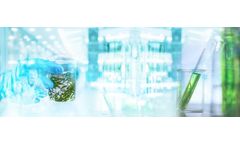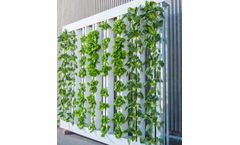Photosynthesis Rate Articles & Analysis: Older
32 articles found
Dr. Zobayed has over 25 years of expertise in the tissue culture industry and he's the mastermind behind Segra Internationals plantlet production efforts in Canada. Today he'll be going through the overall process of tissue culture initiation, multiplication and acclimation of tissue culture cannabis plantlets. He'll also review the various methods of tissue culture production including explant ...
As algae-based research rises in prominence for its potential in renewable energy production and climate change mitigation, the need for high-precision analytical equipment is paramount. Hiden Analytical is excited to announce that the Hiden HPR-40 DSA (Dissolved Species Analyzer) is proving to be a perfect research tool in the rapidly evolving algae research landscape. The HPR-40 DSA is ...
Summary: With the development of intelligent agriculture in the Internet of things, many agricultural sensors appear in agricultural environmental monitoring, among which illumination sensor is a more important one.The sensor measures the intensity of light, which affects photosynthesis and, in turn, crop yields.In smart agricultural planting, the illumination sensor can detect ...
Small changes in atmospheric CO2 concentrations can significantly affect photosynthesis rates and plant growth, so CO2 levels in vertical farms must be carefully monitored and controlled. ...
Though they can tolerate wide ranges of temperatures, oysters are sensitive to variables such as salinity and dissolved oxygen. Photosynthesis (PAR) of plants and algae in the water are responsible for much of the water’s dissolved oxygen and are crucial to the survival of oysters. ...
Photosynthetically active radiation is the basic energy source for the formation of biomass. It controls the effective photosynthesis rate of organisms on the landing site and directly affects the growth, development, yield, and quality of plants. ...
Photosynthetically active radiation is the basic energy source for the formation of biomass. It controls the effective photosynthesis rate of organisms on the landing site and directly affects the growth, development, yield, and quality of plants. ...
McCree defined the McCree Curve after testing the photosynthesis ratio of numerous plants. This is often considered the “photosynthesis curvee”. (More info and the full article can be found here) Different Photosynthesis Curves The picture below shows two different photosynthesis absorption curves: ...
With irrigation being used in many spheres of life and food production methods getting diversified, it is not surprising that research on this topic is getting more specialized. Procedures for analysis, which were restricted earlier to big institutions, need to be widely available so that their reach is extended and science will benefit from more in-depth studies. An increasing number of ...
Irrigation is essential to increase food production. However, competing needs and increasing drought makes water for irrigation scarce. Therefore, new methods and strategies are continuously being tested by scientists to improve food production, accompanied by better water use efficiency. This article will examine how modern field tools are helping in this venture. Irrigation Methods According ...
Currently, agriculture uses seventy percent of the freshwaters, globally. Available freshwater sources will not be enough to increase food production to feed growing populations in the coming decades. Therefore, there is a concerted effort to grow crops with seawater. Hence, scientists are investigating the various challenges involved in growing plants with saline water. These include greenhouse ...
The nine varieties were tested for short- and long-term responses such as transpiration rate, stomatal conductance, net carbon dioxide (CO2) assimilation rate, CO2 fixation, green biomass production, and grain yield per plant. ...
With the pressure to increase food production, every agricultural practice that can be optimized for improving crop yield is under scrutiny; therefore, micronutrients, which are important for crop health and growth, are receiving more attention. Agronomists are increasingly studying different treatment methods to establish the easiest and most cost-effective way to improve micronutrient ...
Cadmium is a heavy, non-biodegradable metal that is toxic to plants, people, and animals. With increasing pollution and emission of cadmium, its levels in agricultural soils are increasing. The risk to humans is high due to consumption of cadmium-contaminated food. Modern applications of gas analysis and laser measurements are speeding up research in addressing the problem of cadmium stress. ...
Photosynthesis is undoubtedly one of the most important physiological processes on Earth. It is the process by which plants, algae, and bacteria produce food. Photosynthesis makes these organisms the primary producers of the earth, as all other organisms feed on them for their energy source. People depend on this important process for most of their needs: food, fiber, fuel, timber, etc. Also, ...
In all cases, whether in the laboratory or in the field, measuring photosynthesis is a necessity. Measuring Photosynthesis Since photosynthesis is a chemical reaction, its levels are monitored by the rate of occurrence. ...
In all cases, whether in the laboratory or in the field, measuring photosynthesis is a necessity. Measuring Photosynthesis Since photosynthesis is a chemical reaction, its levels are monitored by the rate of occurrence. Changes in the levels of its inputs and outputs are used to calculate the photosynthetic ...
Sunflower (Helianthus annuus L.) plants were grown with saline–sodic water (SSW) by treating with potassium (K @ 100 and 200 mg K2O kg−1 soil) and farm yard manure (FYM @ 5 and 10% of soil, w/w). Irrigation with untreated SSW caused soil salinization/sodification, leading to an increase in electrical conductivity (EC) of 165% and sodium adsorption ratio (SAR) 100% with the subsequent increase ...
In order to investigate the performance of Iris wilsonii in high-salinity wastewater, seven microcosm submerged beds were built with rectangular plastic tanks and packed with marble chips and sand. Each submerged bed was transplanted with six stems of I. wilsonii. The submerged beds were operated in a 7-d batch mode in a greenhouse with artificial wastewater for three 42-d periods. Influent ...
Food: Plants don’t eat food (heterotrophic)—they make it (autotrophic) by taking atmospheric CO2, water from the soil, and energy from light to make simple sugars in a process called photosynthesis. The chlorophyll molecule, responsible for the green color in leaves, is made of carbon and nitrogen, and acts as the antennae to initiate ...








